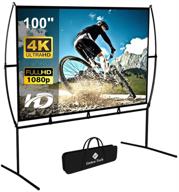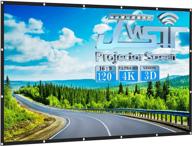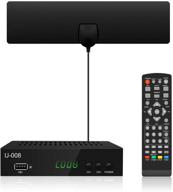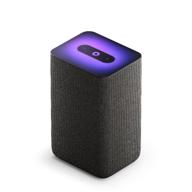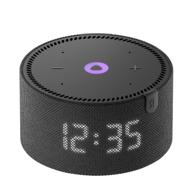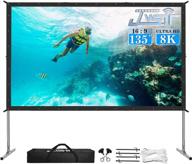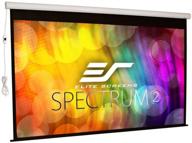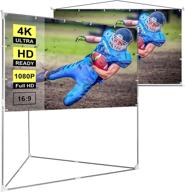Choosing the Right TV Screen Size for Your Viewing Needs
When shopping for a new TV, one of the most important factors to consider is the screen size. With TVs available in sizes ranging from compact 32-inch models up to massive 85-inch and larger screens, it can be tricky to determine exactly what size is best for your room and viewing habits.
Consider Your Viewing Distance
A general rule of thumb is that you want your TV screen size to correlate with your viewing distance. The optimal viewing distance for any screen size is between 1.5 to 2.5 times the diagonal length of the screen. For example:
- For a 50-inch screen, ideal viewing distance is 75 to 125 inches away.
- For a 65-inch screen, ideal viewing distance is 97 to 162 inches.
- For an 80-inch screen, ideal viewing distance is 120 to 200 inches.
Sitting closer than the recommended distance can strain your eyes, while sitting further away diminishes the immersive experience on a large screen.
Factor In Your Room Size
Along with viewing distance, room size is another critical element. A screen should not overwhelm the room it is in. A good rule of thumb is that a TV should not take up more than 25% of your wall space. The right proportions keep the TV feeling balanced. For example:
| Room Size | Maximum Recommended TV Size |
|---|---|
| 10' x 12' | 50 inches |
| 12' x 15' | 65 inches |
| 15' x 20' | 80 inches |
Usage and Seating
How you plan to use your TV should also impact your size selection. Will it be primarily for movies and streaming, or gaming too? The more immersive the activity, the larger you may want to go for full effect. If you have a wide seating area, a larger screen lets viewers on the sides still see clearly.
Budget and Technical Specs
Screen size will impact price, with larger TVs costing more. Picture quality also varies across sizes, with traits like contrast and backlighting improving on larger models. Compare technical specifications like refresh rate, HDR support and smart features to get the best display you can afford.
By keeping these factors in mind, you can zero in on the perfect screen size to create an exceptional viewing experience in your space.
Top products in Projection Screens
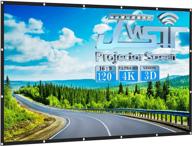

13 Review

Finding the Perfect Display Resolution for Your Needs
With TVs and monitors offering different display resolutions, deciding on the right resolution for your needs is important. Resolution determines how sharp and detailed the image quality appears.
Common Display Resolutions
Some typical resolutions you’ll see are:
- 720p (1280 x 720 pixels)
- 1080p (1920 x 1080 pixels)
- 1440p (2560 x 1440 pixels)
- 2160p or 4K (3840 x 2160 pixels)
- 4320p or 8K (7680 x 4320 pixels)
The higher the resolution, the crisper and more lifelike images look. But you may not need the highest resolution available if you won't notice the difference.
Consider Screen Size
A general guideline is to match resolution to screen size. For smaller TVs, 720p or 1080p are adequate. For screens 65" or larger, 4K is recommended to see any extra detail. And 8K is currently best suited to huge 80"+ screens according to the viewing distance needed to appreciate extra definition.
| Screen Size | Recommended Resolution |
|---|---|
| 32 - 49 inches | 1080p |
| 50 - 65 inches | 4K |
| 70 inches and up | 8K |
Viewing Distance Matters
Consider typical viewing distance too. You need to sit close enough to your screen to notice a difference. For HD 1080p, you can sit as close as 5-6 feet. For 4K, ideal distance is 1.5 to 2.5 times the screen size. And you need to be very close for 8K improvements.
Content Source Makes a Difference
Resolution works hand in hand with source content. Most broadcast HD is 1080p. Streaming 4K content is growing. But native 8K movies and shows are still limited. If your sources are lower resolution, a higher resolution screen won’t make them look better.
Features to Look For
To take full advantage of higher resolutions, also look for display features like:
- High dynamic range (HDR) for enhanced contrast and colors
- High refresh rate (120Hz) for smooth motion
- Quantum dot for wider color gamut
Finding the sweet spot between resolution, screen size, and viewing distance will ensure you wind up with a display tailored to your space and usage.
Getting the Most Out of Smart TV Features
Smart TVs come packed with extra features and apps designed to enhance your viewing experience. Here are some tips to help you get the most out of your Smart TV's capabilities.
Take Advantage of Voice Control
Many Smart TVs now offer voice control features through assistants like Alexa and Google Assistant. Voice commands allow you to easily:
- Launch apps like Netflix or YouTube
- Search for shows, movies, actors
- Adjust volume, switch inputs, turn TV on/off
Just speak naturally and clearly into your remote. Over time the assistant will learn your voice and preferences.
Link Your Streaming Accounts
Linking services like Netflix, Hulu, Prime Video and more to your TV makes them readily accessible in one place. Most TVs have dedicated app buttons on the remote too. Steps to link accounts:
- Go to the app store on your TV menu
- Download streaming apps you subscribe to
- Sign in to each app using your account credentials
Explore Free Ad-Supported Apps
Beyond paid streaming services, Smart TV app stores offer many free ad-supported video apps such as:
- Pluto TV - 100s of live channels
- Tubi - Movies and shows on-demand
- The Roku Channel - Live news, movies, and more
While ads play periodically, the content is free. And it's more convenient than website viewing.
Listen to Music
In addition to watching video, you can use apps like Spotify and Pandora to stream music through your TV. This allows you to enjoy music playback and control it from your TV remote.
Mirror Your Phone or Tablet
Screen mirroring lets you project content from a phone or tablet onto your TV screen. This is useful for sharing photos/videos with others in the room. On both devices, enable screen mirroring in Settings, then connect on the same WiFi network.
Use Voice Assistants
Access Alexa, Google Assistant or Siri via your TV to check weather, control smart home devices, look up recipes, get sports updates, and more. Just press the assistant button on your remote and speak to activate.
With smart capabilities built-in, your TV can stream, control, plan, and interact just like other smart devices. Take time to customize the experience to your needs and preferences.
Future-Proofing Your TV Purchase
With how quickly technology evolves, you want to choose a TV that will continue to meet your needs 3-5 years from now. Here are some tips to consider for future-proofing your TV purchase:
Opt for Larger Screen Sizes
In general, bigger screens are a smarter long-term investment. As prices drop and content quality improves, larger displays become more practical. Aim for at least 55 inches, or 65 inches for more future-proofing.
Look for HDR Compatibility
High dynamic range (HDR) allows for better contrast, deeper blacks, and more vivid colors. HDR10 is the basic standard, while Dolby Vision HDR offers further enhancements. Ensure your TV has at least HDR10, as HDR content will become more prevalent.
Choose a Higher Refresh Rate
Higher refresh rates, especially 120Hz, make motion look smoother and sharper. This is ideal for sports and gaming. A 120Hz native panel, or one that can be boosted via software, brings fluidity to fast imagery both now and later.
Favor OLED/QLED/Mini-LED Screens
These advanced panel technologies deliver superior picture performance that LCD/LED can't match. Their self-emissive pixels and local dimming result in exceptional contrast and black levels. Higher initial cost brings long-term enjoyment.
Look for HDMI 2.1
This latest HDMI version supports higher resolutions and refresh rates that future-proof your connectivity. It enables 8K video at 60fps, 4K video at 120fps, Dynamic HDR, and more. Aim for at least 2 HDMI 2.1 ports.
Get a Smart TV Platform
Whether it's WebOS, Android TV, Roku TV or another, a smart platform brings streaming apps and voice control. Ensure the OS is frequently updated by the manufacturer. Also check that key apps like Netflix are supported in updated versions.
Consider Future Connectivity
Your TV should support modern connections including:
- Wi-Fi 6 (802.11ax) for faster streaming
- Bluetooth 5.0 for wireless audio devices
- USB 3.0 for increased peripheral speeds
Think Bigger Than 4K
While 4K resolution is still most common, future-proof options are emerging like:
- 8K native resolution
- AI image upscaling to 8K
This technology is in early stages but will become more viable over your TV's lifespan. An 8K-ready display avoids feeling outdated.
Getting a few extra years from your TV saves money long-term. Do your research to find feature-packed models that meet both your current and future needs.
What is the use of Amazon Prime for a regular buyer of "Screens"?
For those who regularly purchase TVs, monitors, and other screens, an Amazon Prime membership can provide some useful benefits:
Free and Fast Shipping
Screens like TVs and computer monitors can be large, heavy, and expensive to ship. With Prime, you get free two-day shipping on most Amazon screen purchases. This convenient and fast shipping is free for all Prime members on eligible items.
In-Home Delivery and Setup
Even better, you can often select free in-home delivery and installation on large TV purchases as a Prime member. The delivery team will unpack, assemble, mount, and ensure your new television is functioning properly right in your home.
Access to Exclusive Early Deals
During sales events like Prime Day and Black Friday, Prime members get 30-minute early access to some lightning TV deals. This lets you snag the best discounts before non-members.
Streaming Entertainment
With a Prime subscription, enjoy unlimited streaming of movies, TV shows, music, and more via Prime Video and Amazon Music. Easily watch this Prime content on your new smart TV screen with the Prime Video app.
Extended Returns
Prime offers an extended 30-day return window on purchases, versus just 15 days for non-members. This gives you more time to test out a new monitor or Smart TV.
For frequent screen buyers, a Prime membership can really pay for itself through the shipping conveniences alone. Enjoy the many other entertainment benefits too.
Another interesting products
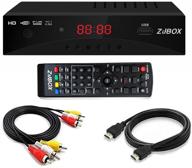

3 Review

What Are The Most Popular Products In The "Screens" Category??
Based on the search results, it is difficult to determine the most popular products in the "Screens" category as the results are for different subcategories such as projector screens, desk top screens, rooftop screens, screens for editing objects, and digital product innovation. However, some of the popular products in these subcategories are:
It is important to note that these products may not necessarily be the most popular in the overall "Screens" category.
What Are The Features Of The Elite Screens Manual Projector Screen??
The Elite Screens Manual projector screen is a popular product that comes with the following features:
Similar products
What Is The Price Range Of Elite Screens Manual Projector Screens??
Based on the search results, the price range of Elite Screens manual projector screens varies depending on the size and format of the screen. Here are some examples of the price range:
It is important to note that the price range may vary depending on the retailer and the specific model of the Elite Screens manual projector screen.





